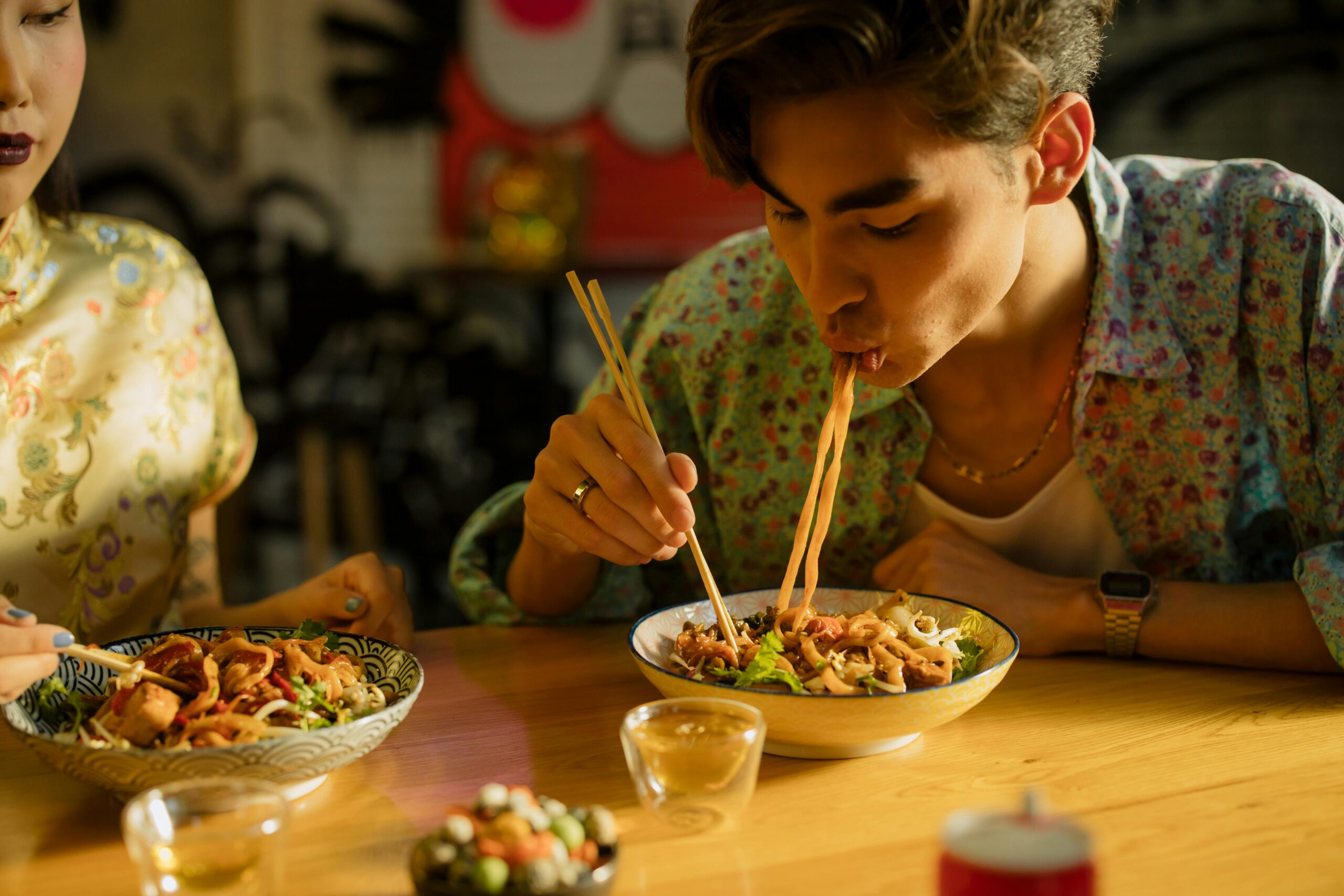The world of Asian noodles is a vast and varied landscape, offering an array of textures, flavors, and dishes that reflect the rich culinary traditions of the continent. From the hearty bowls of ramen to the delicate strands of rice noodles, each type of noodle tells a story of cultural heritage, regional ingredients, and culinary innovation. This journey through Asian noodles will introduce you to the broad spectrum of noodle dishes in a unique and delicious way. Experience the taste of Asia through this curated list of unique Asian noodle dishes.
Ramen: Japan’s Soul Food
In Japan, ramen is more than just a meal; it’s an institution. With its chewy wheat noodles, rich broth, and variety of toppings like sliced pork, nori, and soft-boiled eggs, ramen offers endless possibilities for customization. Each region of Japan has its own variation, from the soy sauce-flavored broth of Tokyo to the miso-based versions in Hokkaido, making ramen a versatile dish that reflects the diversity of Japanese cuisine.
Pho: Vietnamese Beef Soup
Pho, a Vietnamese noodle soup, is characterized by its fragrant broth, rice noodles, and herbs. It’s a dish that balances flavors and textures perfectly, offering warmth, nourishment, and comfort with every spoonful. The clear broth, simmered for hours with spices like star anise and cinnamon, is poured over flat rice noodles and typically served with beef or chicken, making it a beloved dish in Vietnam and beyond.
Japchae: Korea’s Stir-Fried Noodles
Japchae, a popular Korean dish, features sweet potato starch noodles stir-fried with a colorful mix of vegetables and meat, seasoned with soy sauce and sesame oil. The noodles have a unique, slightly chewy texture that’s both satisfying and delightful. Japchae is often served at celebrations and special occasions, symbolizing prosperity and health.
Pad Thai: Thailand’s Global Ambassador
Pad Thai is perhaps one of Thailand’s most famous culinary exports, a stir-fried noodle dish that has captured the hearts of food lovers worldwide. A classic pad thai recipe includes rice noodles stir-fried with eggs, tofu, and shrimp, and flavored with tamarind paste, fish sauce, dried shrimp, garlic, and red chili pepper. It’s a harmonious blend of sweet, sour, salty, and spicy flavors, topped with roasted peanuts and fresh herbs. The key to an authentic Pad Thai is in the balance of these elements, creating a dish that is both complex and comforting.
Char Kway Teow: Malaysia’s Smoky Sensation
In Malaysia and Singapore, Char Kway Teow stands out as a favorite noodle dish, known for its smoky flavor achieved through high-heat wok frying. Flat rice noodles are stir-fried with shrimp, bloody cockles, Chinese lap cheong (sausage), eggs, bean sprouts, and chives, in a mix of soy sauce and chili paste. This dish is a testament to the multicultural influences in Malaysian cuisine, offering a rich, savory, and slightly spicy taste experience.
Conclusion
The journey through Asia’s noodle dishes reveals a rich tapestry of flavors, textures, and culinary traditions. From the umami-rich bowls of ramen to the delicate rice noodles of Pho, and the vibrant toss of Pad Thai, noodles are a fundamental element of Asian cuisine, offering a unique window into the cultures and traditions of the continent. These dishes, not only provide sustenance and comfort but also celebrate the diversity and creativity of Asian cooking. In exploring the world of Asian noodles, one embarks on a delicious journey of discovery, finding in each bowl a story of cultural heritage and culinary artistry that continues to evolve and enchant palates around the globe.
